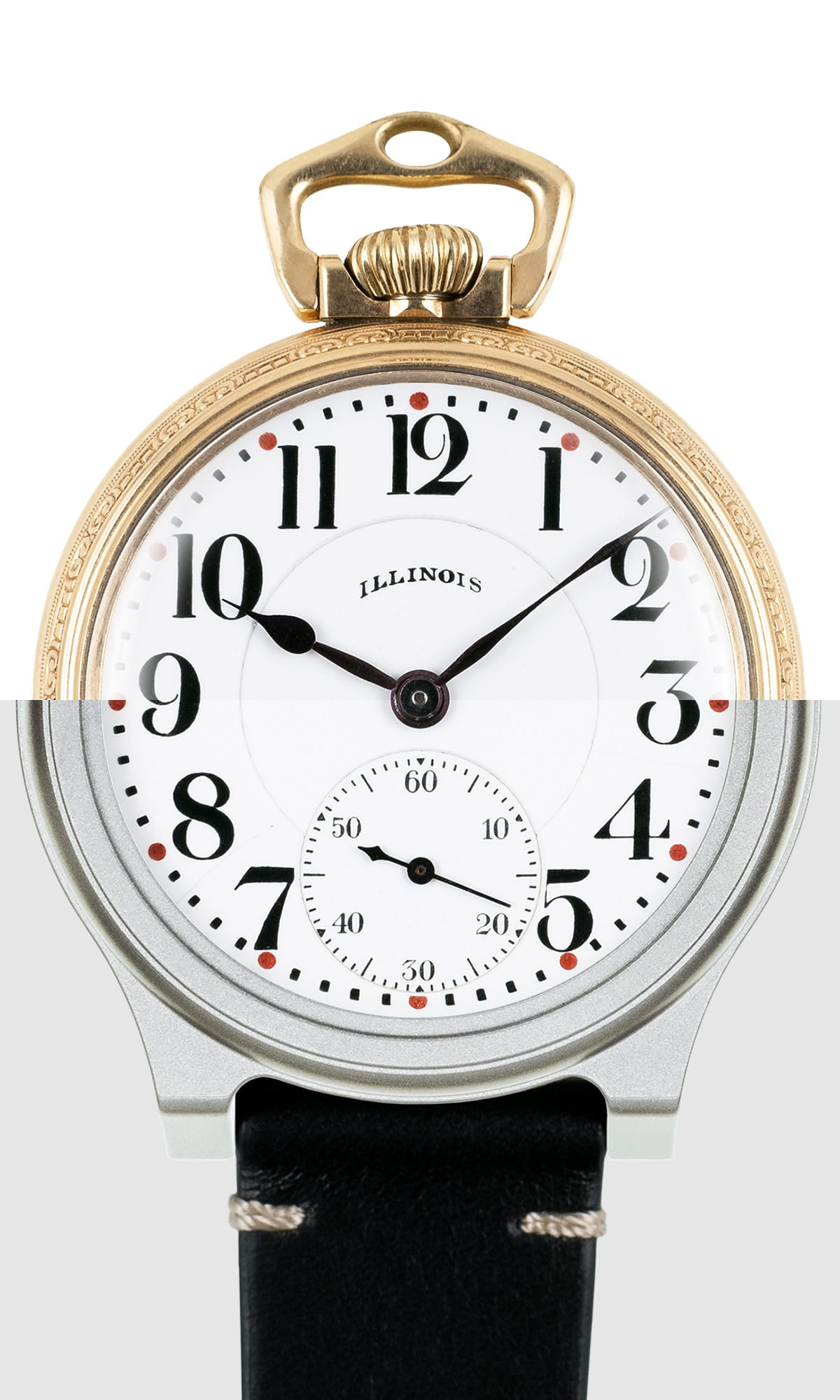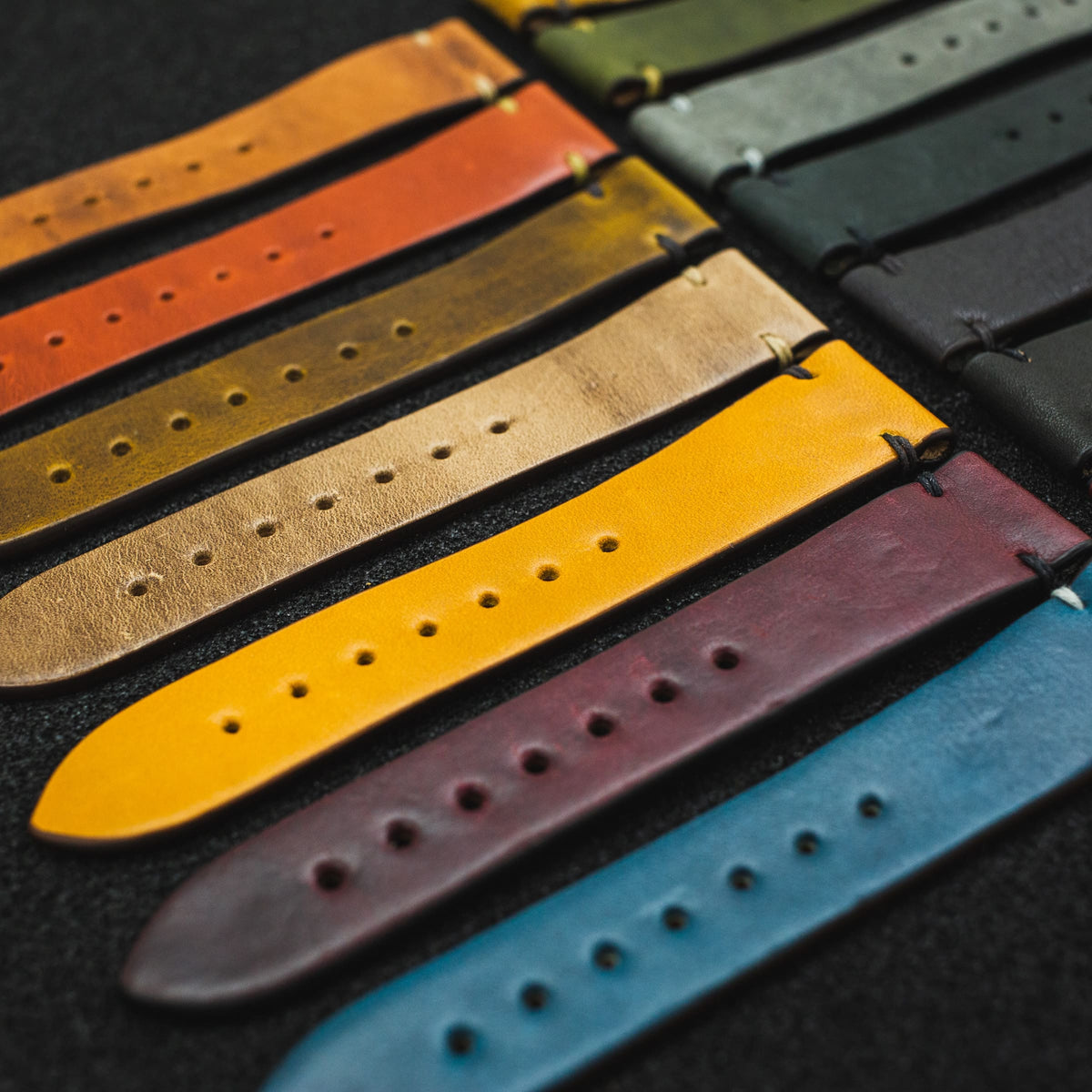










Watch Description
What makes the Lancaster 180 unique: We’re happy to showcase this unforgettable antique watch that was initially released by the Hamilton Watch Company in 1929 — the Lancaster 180. This stunning piece of American manufacturing history boasts an aged tan dial with a distinct white center. The front of this splendid watch also displays a helpful subdial, light-gold-colored numerals, and eye-catching violet arrow watch hands. We encased this beautiful pocket watch within our Bronzed Titanium case and topped it off with a copper crown. The case and crown’s colors complement the dial’s unique palette. On the back of the watch, you can view its historic 912-grade open-face movement with a Reed regulator, double roller safety action, and ¾ plate. The watch’s rear side also displays luxurious details including 17 screw-set jewels and robust gold-plated gears. Finally, we paired this one-of-a-kind piece with our comfortable Moss leather watch strap, which perfectly suits the watch’s distinct and sophisticated style.Movement Manufacturer Information
The movement inside of this watch was made by Hamilton Watch Company. We call this model "The Lancaster" because the company was located in Lancaster, Pennsylvania.
Hamilton is named after famous Pennsylvanian Alexander Hamilton and is the result of multiple re-organizations of attempted watch companies in Lancaster, Pennsylvania. Founded in 1892, Hamilton had a reputation for superior quality and maintained half of the railroad watch market share during some of the most prolific years of American railroad history. During World War II, Hamilton was integral to the production of accurate timepieces for the Military. Deemed "the watch that won the war," the company established an employee-run newsletter so that employees turned soldiers could keep up with life at the factory. While the original factory still stands as luxury apartments, the company stopped producing watches in the US in 1969. Hamilton now produces watches in Switzerland and is owned by the Swatch Group.
Legal Disclaimer: All product and company names, logos, brands, and other trademarks featured or referred to within Vortic's products and services are the property of their respective intellectual property rights holders, if any. Those intellectual property rights holders, other than Vortic, LLC, are not affiliated with Vortic, LLC, our products, or our website. They do not sponsor or endorse our materials.
Watch Specifications
- Manufacturer: Vortic Watch Company
- Warranty: Full 1-Year Warranty
- Case Dimensions:
- Diameter: 47mm
- Thickness: 12mm
- Lug to Lug: 55mm
- Lug Width: 22mm
- Case Material: Sandblasted Titanium
- Crown/Hardware: Copper
- Water Resistance: 1 ATM
- Crystals: Sapphire
- Case Back: Stainless Steel
- Strap: Leather
Movement
- Manufacturer: Hamilton Watch Company
- Serial Number: 3313304
- Manufacture Year: 1929
- Function: Manual Wind
- Jewels: 17 Jewels
- Hands: Original
- Size: 12s
- Power Reserve: ~36 Hours
Let customers speak for us

The Movement
The engine that powers this watch is an antique American pocket watch movement. All the gears and springs that make it tell time are roughly 100 years old on average. We call these watches the American Artisan Series because we're celebrating the history and legacy of the artisan watchmakers who built this engineering marvel a century ago in the United States.
The Story
Today most pocket watches are scrapped for the gold or silver of the case (the outside of the antique timepiece), leaving the inside (what we call the "movement") as trash.
We take pride in upcycling these pieces of American history by salvaging as many as we can, then preserving them inside our wristwatches.
Our expert team of watchmakers restores the antique movement and then we manufacture a custom wristwatch case here in Fort Collins, Colorado.


The Strap
We partnered with Worn & Wound to produce a custom set of straps for our American Artisan Series watches. We now have 15 different colors to choose from including our two Horween Shell Cordovan options. These straps are made in the USA and are based on the Windup Model 2 Premium strap that Worn and Wound offers.









